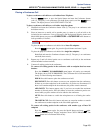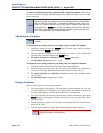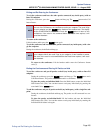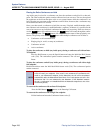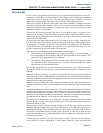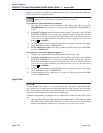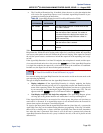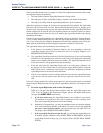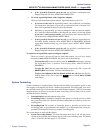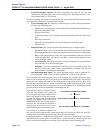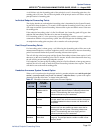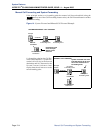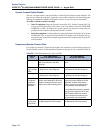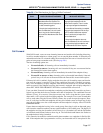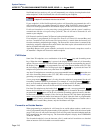
System Features
INTER-TEL
®
CS-5200/5400 ADMINISTRATOR GUIDE, ISSUE 1.1 – August 2005
System Forwarding
Page 211
d. If the Agent Help Extension rejects the call, you will hear a confirmation tone.
Display endpoints will show AGENT HELP REJECTED.
• To use the Agent Help feature with a single line endpoint:
While on a call, hookflash and then enter the Agent Help feature code (375).
a. If you hear reorder tone, the Agent Help feature is not available at your endpoint,
you already have four parties in your call, no conference circuit is currently avail-
able, or the Agent Help Extension is in Do-Not-Disturb.
b. Depending on programming, you may be prompted to enter an extension number.
If so, enter the extension number of the endpoint you want to call for help. If you
do not enter a valid extension number, you hear reorder tones and must start over.
The display shows REQUESTING AGENT HELP.
c. If the Agent Help Extension accepts the call, you will hear the Agent Help tone,
if enabled. Display endpoints show AGENT HELP IN PROGRESS. When the
Agent Help Extension hangs up, your display shows AGENT HELP TERMI-
NATED.
d. If the Agent Help Extension rejects the call, you will hear a confirmation tone.
Display endpoints will show AGENT HELP REJECTED.
To respond to an Agent Help request at a display endpoint:
When you receive a private call from an Agent Help request, you will see a display
that shows (name) REQUESTS HELP. You can do one of the following:
To accept the call: Answer as usual or press the
ANSWER menu button. You hear
the Agent Help Tone, if enabled. Your display shows AGENT HELP IN
PROGRESS.
To reject the call: Enter the Agent Help Reject feature code (376) or press the
REJECT HELP menu button. You hear confirmation tone.
To place your endpoint in Do-Not-Disturb to block the call: Enter the Do-Not-
Disturb feature code (370) or press the button or the
IC CALL TO DND
menu button.
System Forwarding
System forwarding is a standard feature that provides the ability to program the system so that
calls ringing at an endpoint will follow a database-programmed “forwarding path” that routes
the call based on the type of call and the status of the intended endpoint. (The Call Forwarding
endpoint feature can be used to override System Forwarding.) Several terms will be used to
describe this feature, including:
• Principal Station: Original endpoint being called.
• Forwarding Point: A destination (endpoint, hunt group, or off-node device) to which
the system-forwarded call is directed. Each forwarding path can contain up to four for-
warding points.
• Forwarding Path: The sequence of forwarding points to which the call will be sent.
Forwarding paths are programmed in the database. Up to 200 unique paths can be pro-
grammed. Each endpoint can have up to three forwarding paths.
Two system timers are used with this feature:
• System Forwarding Initiate: This timer determines how long a call will ring (unan-
swered) at the principal station before moving to the first forwarding point. The default
value is 15 seconds, and the range is 2–255 seconds.
DND



